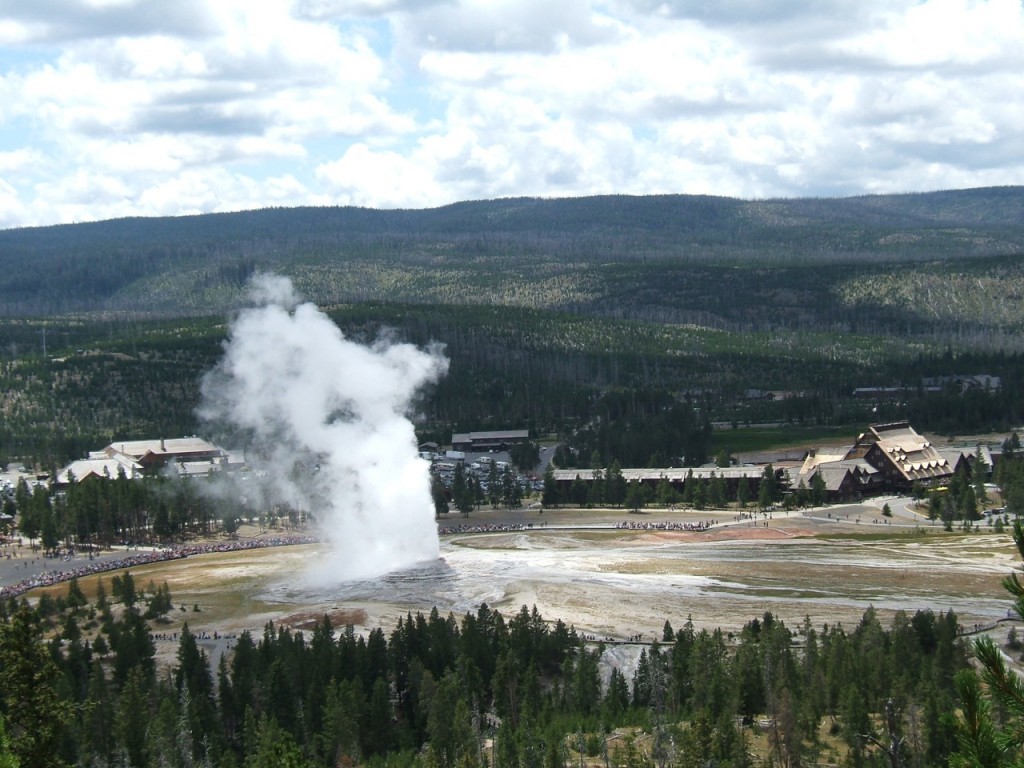USGS assesses tremendous geothermal potential for the western U.S.
The U.S. geothermal resource potential is estimated at 9,000 MWe from discovered geothermal resources with 30,000 MWe from undiscovered geothermal resources, and up to 518,000 MW with the application of EGS technology, so the US Geological Survey in a recent assessment.
Reported by the Arizona Geological Society, there is a large potential for geothermal energy in the Western United States.
Having reported on this earlier this week, I have been made aware of a factual error for the headline. So I am herewith correcting the story and headline.
In a statement on the article, Karl Gawell, Executive Director of the U.S. Geothermal Energy Association states that, “The USGS estimates the current identified hydrothermal potential at 9000 MW. But, most of the conventional resources are still undiscovered, since we do not have the ability to identify geothermal reservoirs short of drilling into them. Regarding undiscovered potential, Colin Williams said “The mean estimated power production potential from undiscovered geothermal resources is approximately 30,000 MWe.” (http://www.arizonageologicalsoc.org/)
The “full range of potential” stated by the USGS report is between 7,900 MW and 73,000 MW. So if one considers the identified and undiscovered geothermal resource potential one would have to take a mean figure of this range, which would be around 40,000 MW. The difficulty here is that to be conservative in estimates than one would be safer to take only the discovered resources of 9,000 MW, which would essentially four-fold current installed capacity.
“The U.S. Geological Survey (USGS) recently assessed the electric power generation potential of conventional geothermal resources in the United States. These resources are concentrated in the States of Alaska, Arizona, California, Colorado, Hawaii, Idaho, Montana, Nevada, New Mexico, Oregon, Utah, Washington, and Wyoming, which contain all 241 identified moderate-temperature (90 to 150°C; 194 to 302°F) and high-temperature (>150°C) geothermal systems located on private or accessible public lands.
Electric-power potential was also determined for seven low-temperature (<90°C) systems in Alaska for which local conditions make electric power generation feasible. In addition, the assessment also includes a provisional estimate of the power generation potential from the application of unconventional, Enhanced Geothermal Systems (EGS) technology for creating geothermal reservoirs in regions characterized by high temperature, but low permeability, rock formations. The assessment indicates that the electric power generation potential from identified geothermal systems is approximately 9,000 MW electric, distributed over these 13 States. The mean estimated power production potential from undiscovered geothermal resources is approximately 30,000 MWe. Another estimated 518,000 MWe could be generated through successful implementation of EGS technology in Arizona, California, Colorado, Idaho, Montana, Nevada, New Mexico, Oregon, Utah, Washington, and Wyoming.
The presence of significant undiscovered geothermal resources as well as the large potential from breakthroughs in EGS technology relative to the currently installed geothermal production capacity of approximately 3,000 MWe highlights some critical needs for future exploration and development activities by both the government and private industry. One critical need is for new techniques to improve geothermal exploration and the acquisition of diverse types exploration data over a broader geographic area. A second is to develop improved occurrence models for quantifying the nature and extent of undiscovered resources. A third is to expand our understanding the geothermal resources in the conductive thermal settings of sedimentary basins, which are important components of the geothermal resources in the central and eastern United States. A fourth is to address the major issues surrounding the development and implementation of EGS.
These include uncertainties in (1) the estimated geothermal recovery factor, which is the ratio of produced thermal energy to the thermal energy contained in the fractured EGS reservoir, (2) the likely spatial pattern of EGS development, and (3) the relative effects on productivity of declining fluid viscosity with increasing temperature, fracture closure at higher levels of effective stress, and the increased rates of mineral precipitation and dissolution at higher temperature. In support of ongoing efforts by the DOE Geothermal Technologies Program to advance the geothermal energy utilization, USGS is collaborating with the DOE to address this needs in future geothermal resource assessments, develop new geothermal resource classification standards and assist in the establishment of the National Geothermal Data System.”
Source: Colin F. Williams, USGS, “The Future of Geothermal Energy”, Arizona Geological Society


















